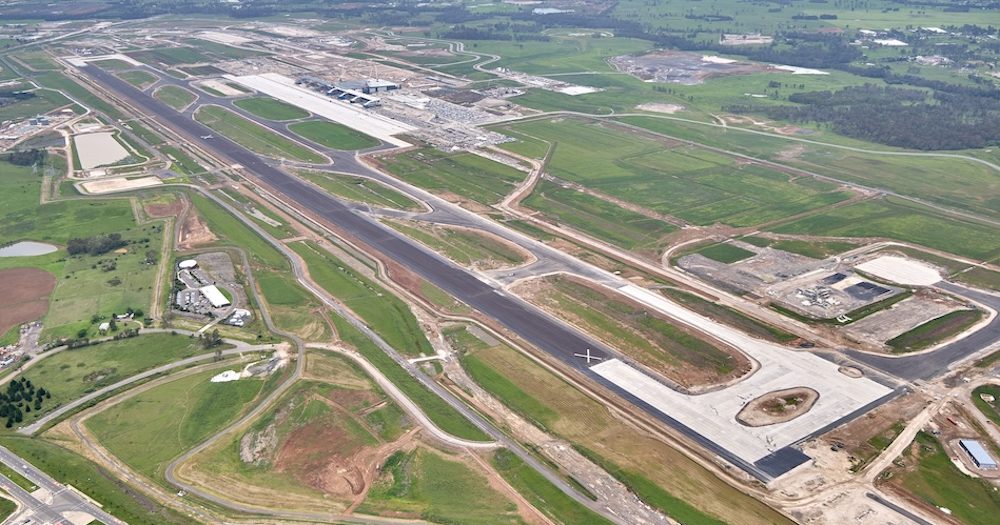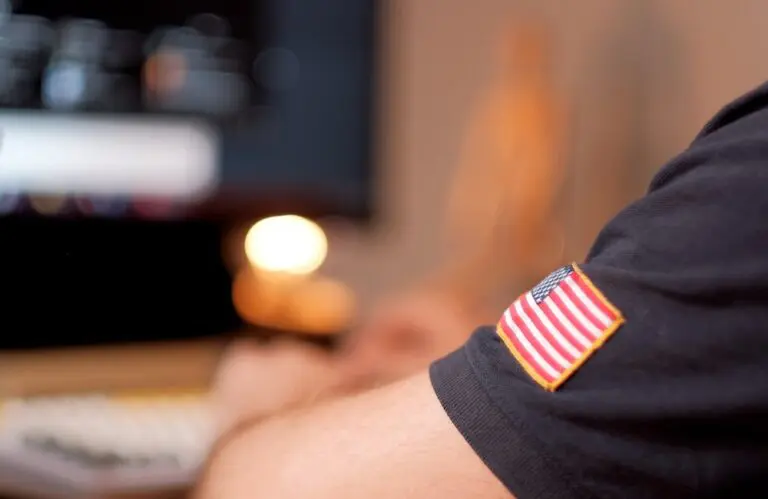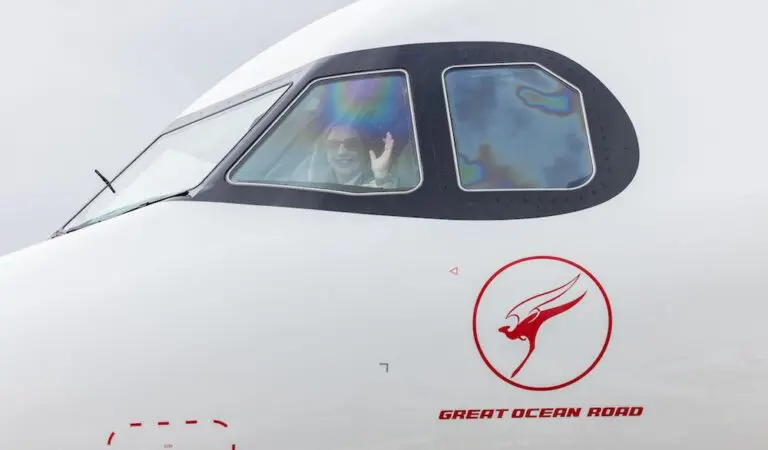As excitement around Western Sydney International Airport (WSI) slowly builds, the future hub has reached a major milestone – the completion of the construction of its runway.
With the laying of asphalt finished, WSI will turn its focus to marking lines and installing 3,000 lights on the 3.7-kilometre runway.
WSI CEO Simon Hickey said the completion of the runway marked a turning point in the development of the airport.
“Nothing says ‘airport’ more than a runway, so we’re proud to reach this important milestone in bringing Sydney’s new airport to life,” he stated.
“We’ve laid enough asphalt to cover 41 soccer fields, around 55,000 thousand tonnes of asphalt for the runway of Sydney’s new airport.”
“Fastest connections”
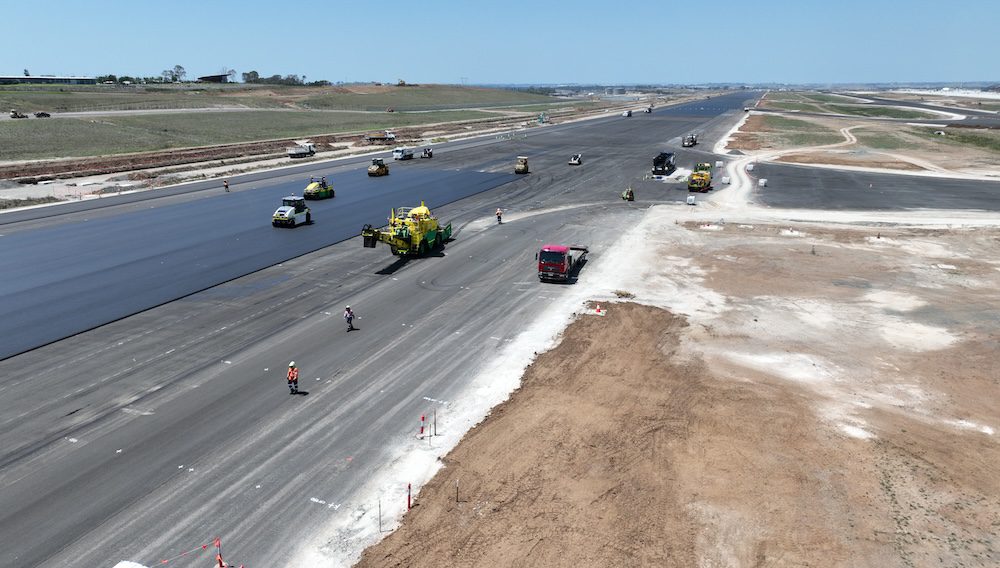
Hickey also lauded the airport’s design, which he says will ultimately speed up passengers’ journeys.
“Our runway’s smart terminal design will provide fast taxi times of just five minutes from both ends of the runway, getting our customers in the air or to the gate faster,” he explained.
“On opening, WSI will provide 20 more flights an hour for Sydney, which will give Sydneysiders more choice and placing downward pressure on airfares.
“WSI will have the fastest minimum connection times of any airport on the east coast of Australia. With international and domestic under one roof, transferring between flights will be faster and stress-free for passengers.”
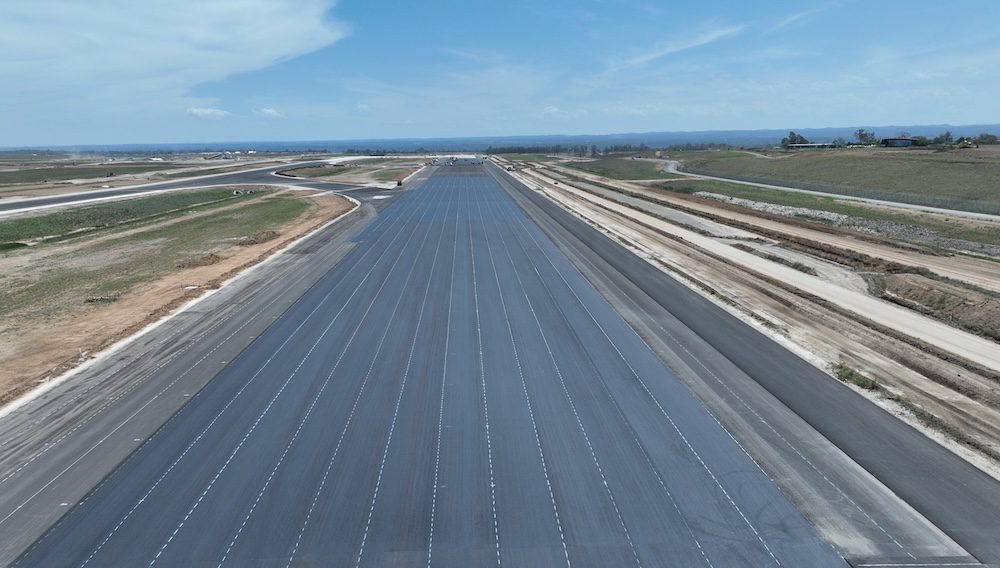
According to Christian Byrne, Project Director for runway constructors CPB Contractors and ACCIONA, said the laying of asphalt took over three months, in which time, 270 tonnes of asphalt were placed per hour.
“At the same time, we’ve laid approximately 220km of aeronautical ground lighting cabling under the runway. That’s equivalent to the distance between Sydney and Forster,” he stated.
“Layers of asphalt have been laid meticulously, often in multiple passes, while quality checks are completed to ensure the surface meets strict tolerances.
“Specific asphalt mixes, designed to handle the repeated stress of aircraft take-offs and landings, have been used for the airport’s runway. The mixtures and materials used offer higher flexibility and load-bearing capacity than those used on roads.”
Sydney’s “biggest airport”
Mr Hickey said the airport, which is also known as Nancy-Bird Walton, was still slated for a late-2026 opening.
“So in less than 3 years from now planes will be taking off and landing on the runway, connecting Sydney to the world via its cultural heartland, here in Western Sydney,” he remarked.
“WSI is being designed for growth and will eventually become Sydney’s biggest airport. We will eventually grow to 82 million annual passengers, around the size of the world’s major airports, such as Dubai and London Heathrow.”
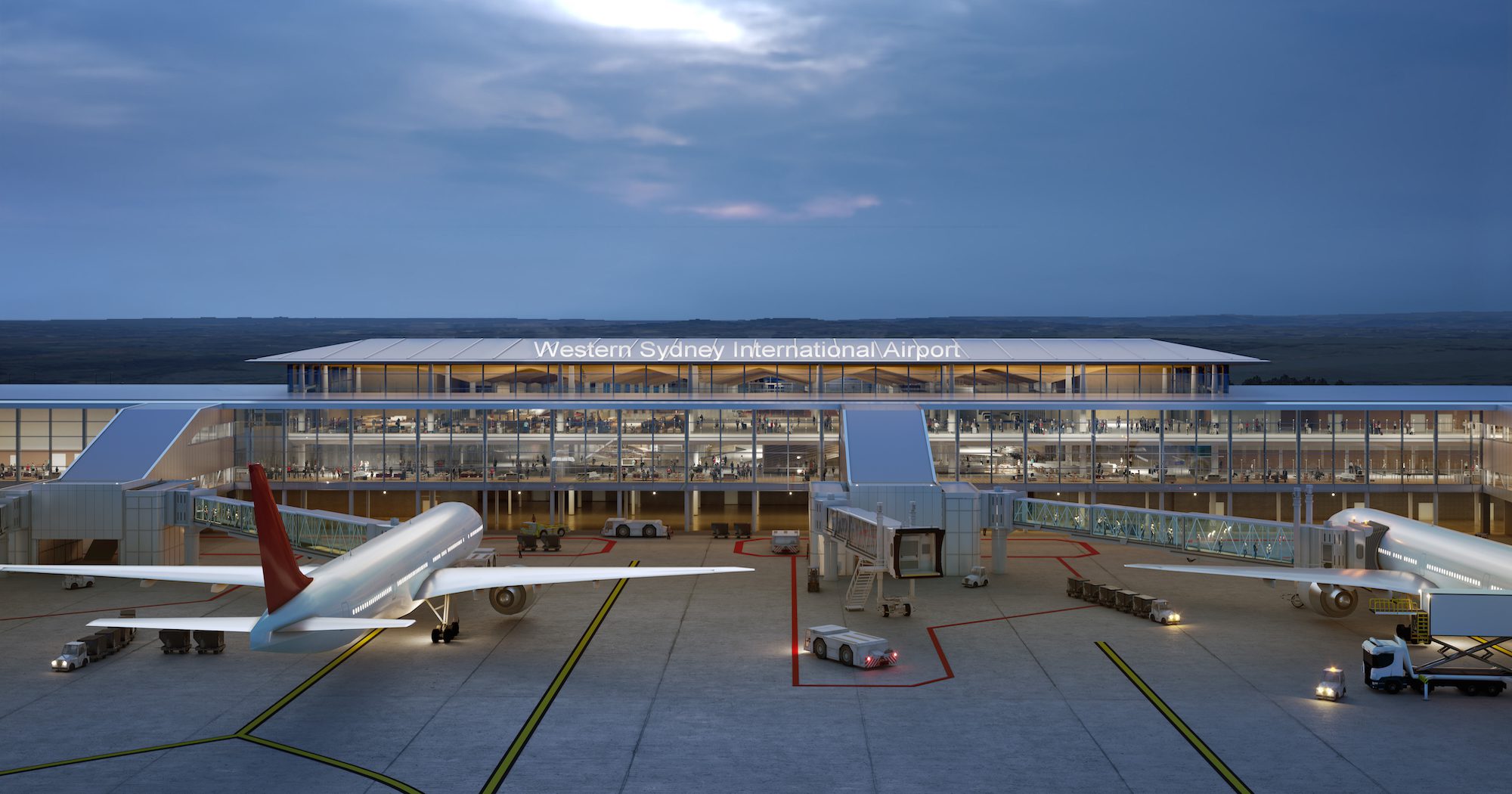
Last year, Western Sydney International revealed its plans for a Business Precinct at the future international hub, with a ten-storey, 154-room hotel on the cards for the 20-hectare site.
Qantas and Jetstar are the first airlines to sign up to WSI, with both carriers agreeing to operate domestic flights out of the hub when it opens.
Last year, the International Air Transport Association (IATA) issued Western Sydney International its three-letter code in record time.


